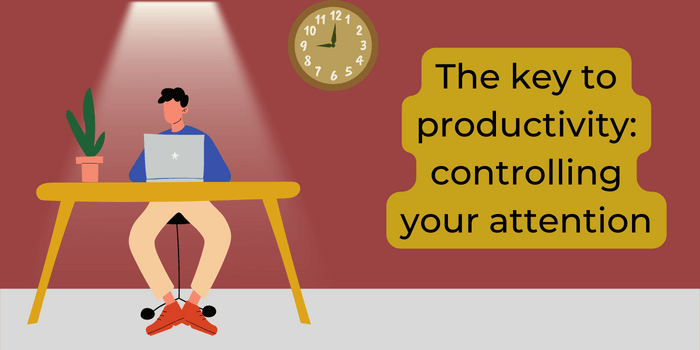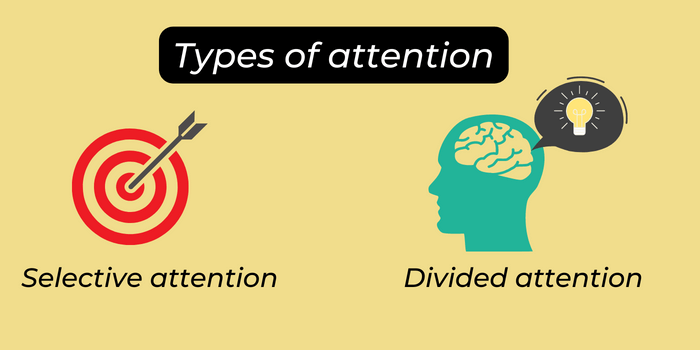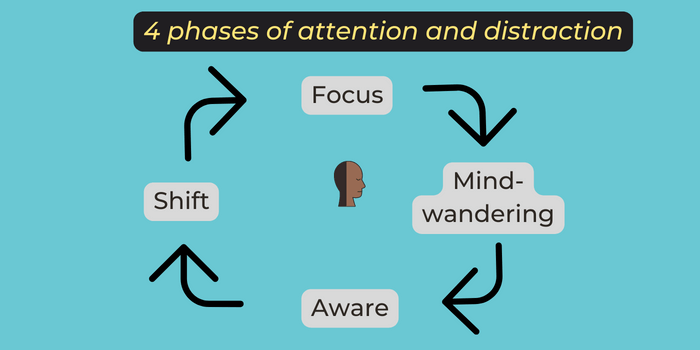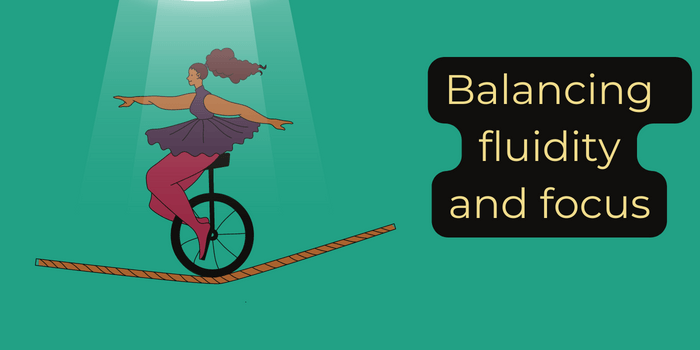Kanwaldeep Kahlon, a participant of our Deep Work & Flow bootcamp, finished the first draft of his book in just 4 weeks, a task which previously seemed impossible.
He accomplished this with just one small change in the way he worked. During the HabitStrong deep work sessions, he focused his attention solely on writing the book and nothing else.
Instead of trying (and failing) to control time, a more viable strategy is to control your attention. Master the ability to choose when and on what you want to (or don’t want to) focus your attention.
You cannot control time, but you can control where to place your attention.
I will now explain a few key concepts about attention control so you’re in a better position to build the skill of attention control.
Understanding precedes action.
Attention determines experience
In his 1890 book, The Principles of Psychology, William James wrote about how most of the stimuli in our environment do not make it to our conscious experience, because what we experience is only what we “agree to attend to.” [1]
Our experience is shaped by our selective interest in some stimuli, not all. Without this filtering, our minds would be something of a “gray chaotic indiscriminateness,” wrote James.
What was true then remains true even now.
The classic selective attention test of The Invisible Gorilla slams this point home. If you’re hearing about this test for the first time, do yourself a favor and watch the linked video before you read any further.
If you’re like me and most people who watched the video for the first time, you would have completely missed the gorilla. Watch the video for a second time and you will wonder how you could miss it when it was right there in front of your eyes.
We think we notice all things that are visible to us and are distinctive, but the fact is that we notice only the things we pay selective attention to.
To control your life experiences (and productivity), you must control your attention.
Different types of attention
According to cognitive psychology, attention is broadly of two types [2]:
- Selective attention
- Divided attention
Selective attention
This is what the invisible gorilla experiment illustrates. When we use selective attention, we block out several features of our environment and focus on one feature that we’re interested in.
Another example is how when you are reading a book, your brain selectively focuses on the words and ideas in the text, filtering out any distractions such as sounds or movements around you. Without selective attention, reading would be much less enjoyable.
Selective attention is what we must build to deeply focus on a task. Selective sustained attention can get you into the state of flow, provided the task meets the parameters of flow.
Divided attention
Divided attention is what we employ when we multitask. Here we shift our attention between two or more things that have different cognitive demands.
While many of us think that we are great at multitasking, research shows that chronic multitaskers are terrible at a wide variety of cognitive tasks [3].
People who multitask are chronically distracted and are poor at filtering out irrelevant information. They also lose the ability to stay laser-focused on a task even when they want to, thanks to neuroplasticity.
Our brain is plastic and can be trained a certain way, but reverting it to the original state takes another bout of training. It doesn’t simply snap back like a rubber band.
Attentional requirement depends on the type of task
In his popular essay, Maker’s Schedule, Manager’s Schedule, Paul Graham wrote about how engineers need several hours of uninterrupted time to code, while managers need only very limited uninterrupted time.
A manager’s schedule is typically sliced up into tiny slots, with the purpose decided in advance. Meetings and calls are good examples. A manager’s schedule is for the bosses.
As a maker, you simply cannot work in small slots of 30 minutes or an hour. Writing code, for example, is a task that requires deep focus. In one hour, you’re just about getting started.
Typically, there is also a power asymmetry between the manager and the maker. When the manager holds random meetings or seeks updates without paying mind to the attentional requirements of a maker, you often find the team productivity at a low.
Sometimes you need to combine the maker and managerial roles. A good strategy here is to batch hard intellectual tasks that need focus into long uninterrupted blocks, and to keep the rest of the time loose.
Different types of work need different types of schedules. Remember that.
4 phases of attention and distraction
There are 4 distinct phases of attention and distraction [4].
Phase 1: You make a choice to focus on a specific task
Phase 2: Your attention wanders from the task
Phase 3: You notice that your attention has wandered
Phase 4: You make a choice to either return to the task, or do something else
This cycle repeats.
With repeated attention to this cycle and the structure of the distraction, you can strengthen your ability to stay focused for longer periods of time and to fend off distractions.
Switching attention carries a cost
Every time you switch your attention from one task to another, it carries a cognitive switch cost that takes a toll on your productivity [5].
Human executive control processes have two distinct stages:
- Goal shifting (I want to do this thing now, instead of that thing)
- Rule activation (I am turning off the rules for that thing, and activating the rules for this thing)
Throughout our day we switch between these two modes to perform a variety of tasks.
The problem occurs when the switching happens repeatedly, or when the switching is between tasks with different contexts.
Every time you switch, you have to reorient yourself to the new context and new rules, thus losing up to 40% of your productive time.
The myth of the 8 second attention span
Before we can get into the techniques of attention management, we must clear up this very prevalent myth of the human attention span being lesser (8 seconds) than that of a goldfish (9 seconds).
The BBC ran a piece called Busting the Attention Span Myth where they tried to track down the origin of this 8 second statistic, but failed.
As the BBC article explains, the idea of humans having a minuscule attention span is incorrect.
Attention is a task dependent phenomenon. The degree of attention we pay to a task depends on what the task demands of us.
Depending on our intentionality, the nature of the task, and the environment, we can either lose ourselves in the task and get into a state of flow, or choose to rapidly switch between several tasks.
Attention is fluid
Evolutionarily, our brains evolved to always keep an eye on peripheral stimuli (a rustle in the leaves could be a tiger), while also focusing on a specific task (foraging berries).
In fact, our attention is more like a strobe than a spotlight, according to research by Princeton University [6].
Every 250 milliseconds, the spotlight of our attention dims and the house lights come up, taking in everything around us.
But why is it that we’re not totally disoriented by this strobing effect? The reason is because our brain fuses our perception into a seamless and coherent movie.
Our brain gives us the opportunity to switch attention if needed, but we won’t necessarily do that. Our attention needs to be fluid for us to survive, but at the same time we must also train ourselves not to give in to this fluidity too easily.
That is the challenge. But with some practical techniques, we can train ourselves to stay focused and lock our attention when required.
In the next article, we will get into some of the actual techniques that we can use for attention management.
***
Sources
[1] http://psychclassics.yorku.ca/James/Principles/prin11.htm
[2] https://openpress.usask.ca/introductiontopsychology/chapter/attention/
[3] https://www.npr.org/2013/05/10/182861382/the-myth-of-multitasking
[4] Focus (HBR Emotional Intelligence Series)
[5] https://www.apa.org/topics/research/multitasking
[6] https://www.eurekalert.org/news-releases/582196





